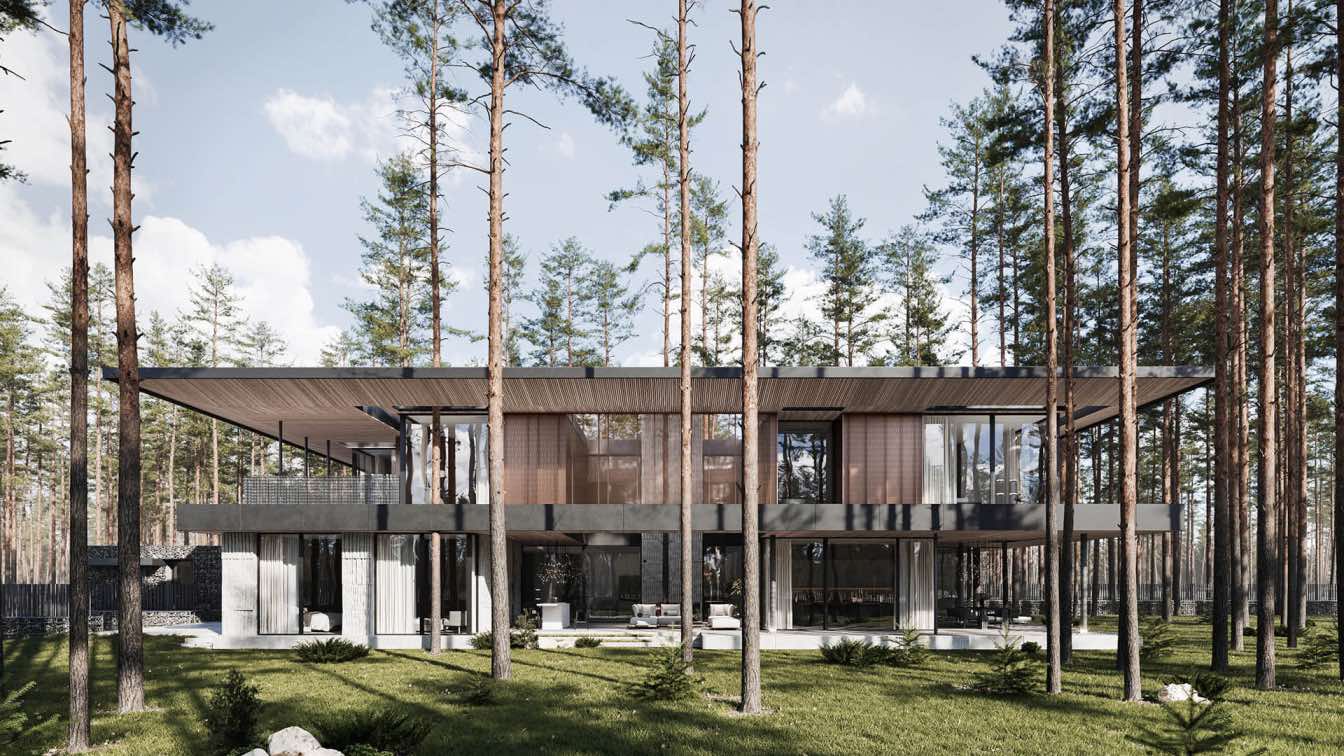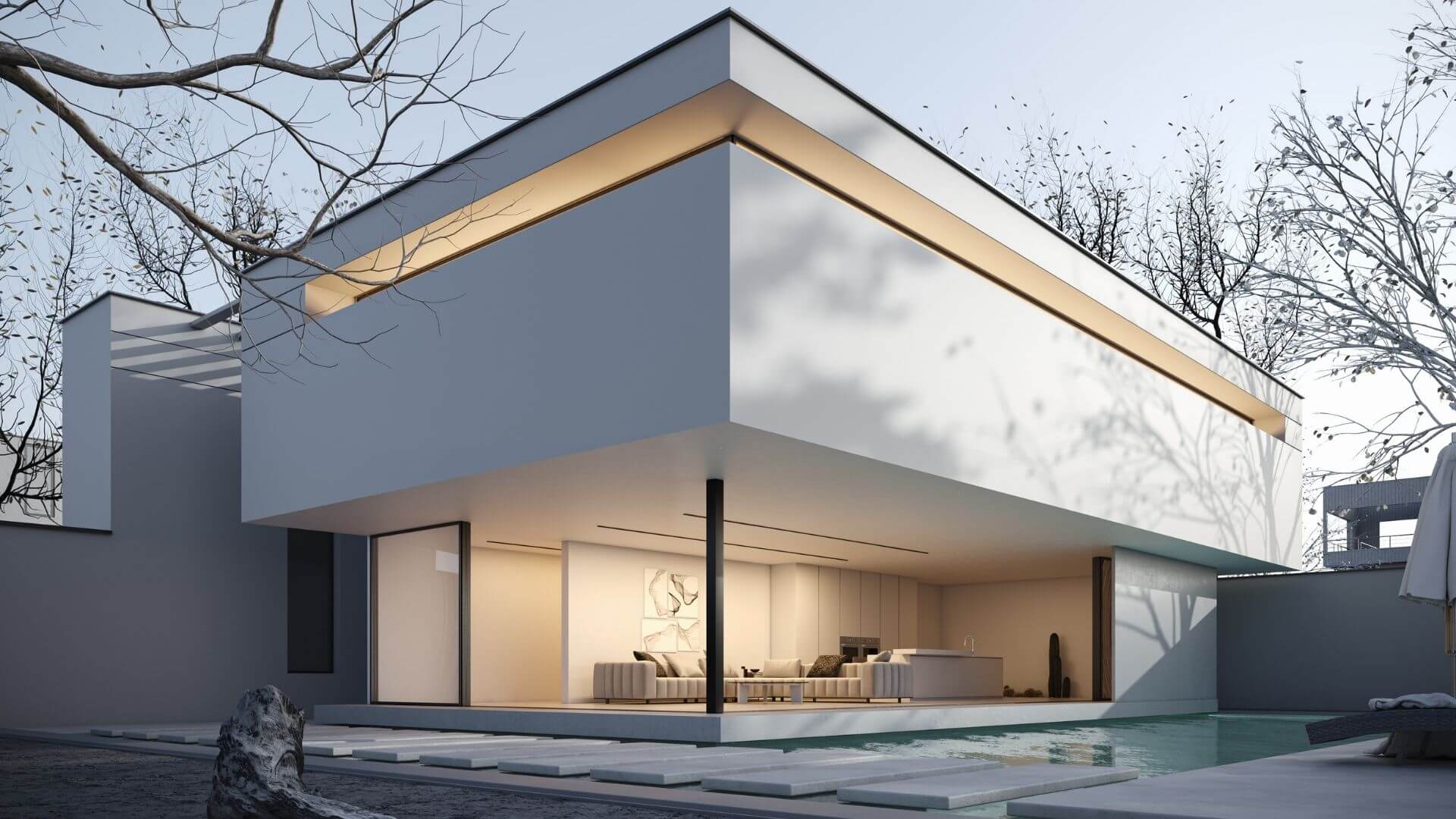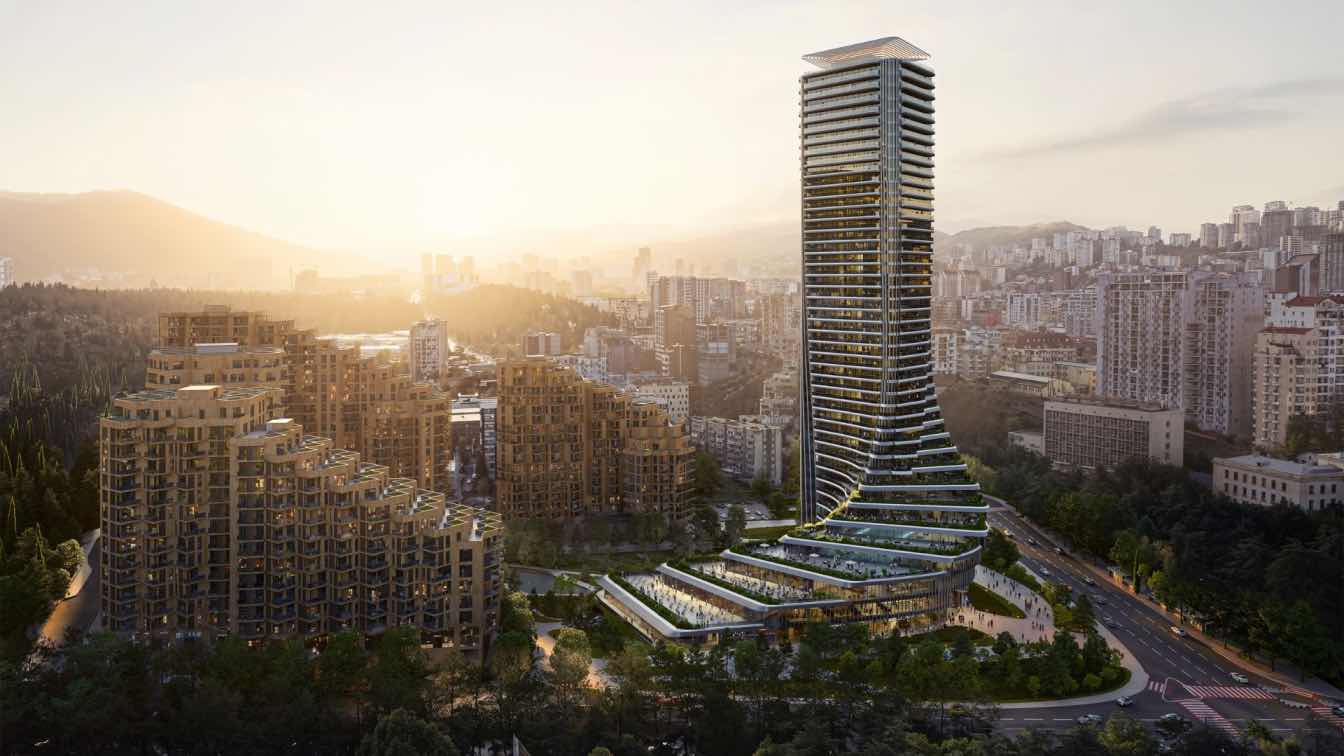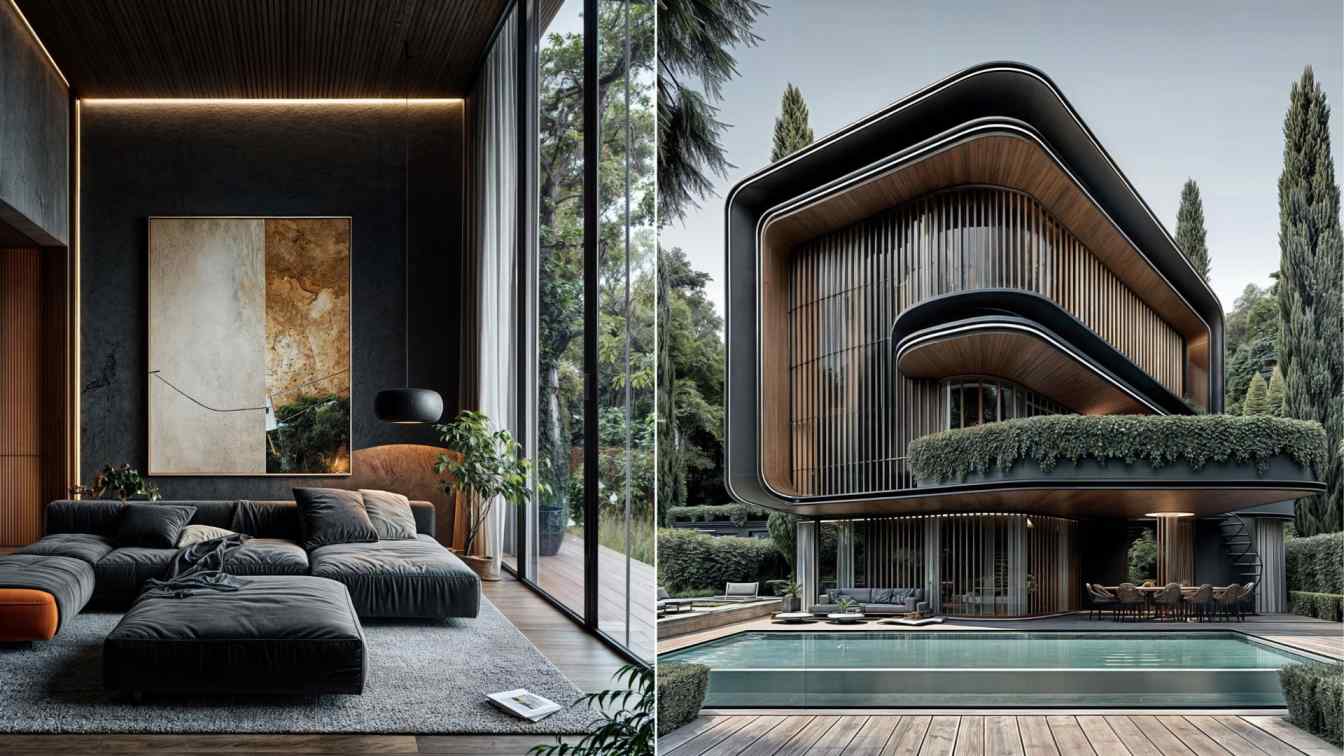Architectural bureau Kerimov Architects has designed a house with a total area of 1000 sq. m that is located in Repino, Leningrad region. The project had one strong stylistic limitation: all the residences in that villa community had to be in a Wright-like style. We created an original project but took into account this requirement. The house is well integrated into the landscape, practically dissolving into it. We’ll try to preserve as many existing trees as possible; some of them will go through the canopies to create a unique rhythm and build a strong relationship between architecture and nature.

The house is planned around the center where is living room placed. To reach other rooms you’ll have to pass by the “main square”, the heart of the house. The rest of the functional program of the house is made of kitchen, bedrooms, and bathrooms for inhabitants and guests, 2 children’s rooms, changing room, SPA with a swimming pool, hammam and sauna, cabinet, lounge zone.
Every room, including SPA, master bedroom, and children’s rooms, has an access to the individual terraces. The central outdoor lounge zone with a fireplace and a summer kitchen is without a canopy.
On the site, there is a guest block with two guest bedrooms; technical facilities, a garage with the staff facility, and a workshop.
One more time for our project we chose natural materials: stone characteristic to the local environment, wood, and metal. All of them will change in time for architecture to fuse with the natural environment.
























